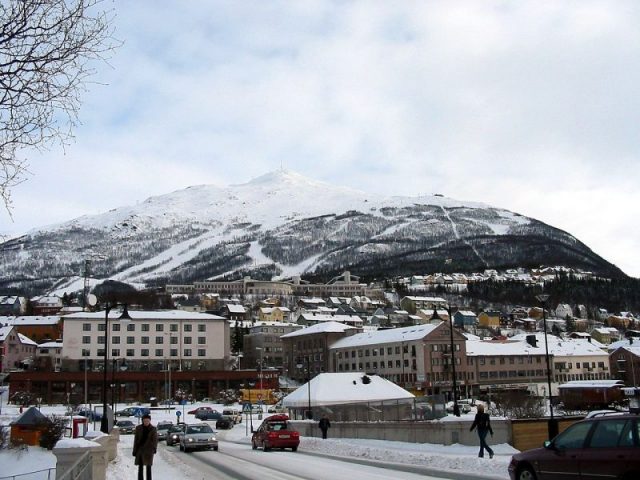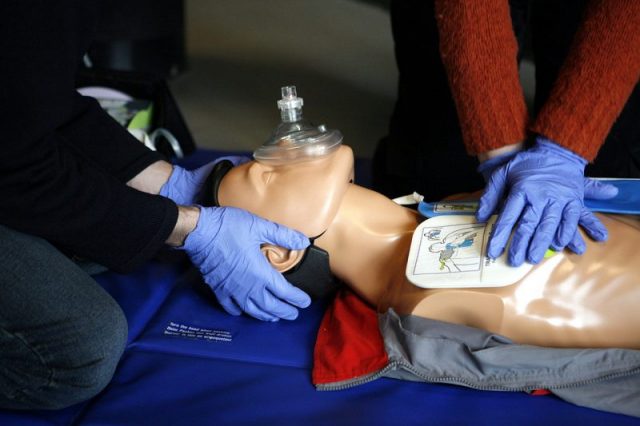Human beings are not designed to withstand extreme cold. Our bodies function normally at around 37 degrees Celsius (98.6 Fahrenheit), and even a slight fluctuation of just a few degrees can put vital organs under serious strain.
However, in 1999, a Swedish doctor survived an ordeal that most people considered impossible: her body temperature dropped below 14 degrees Celsius (57.2 Fahrenheit) before she was resuscitated and brought back from the brink of the end.
According to The Guardian, in May 1999 Anna Bågenholm was working in Narvik Hospital in Norway, training to become a surgeon. One morning she set off for the Kjolen Mountains with friends for a day on the ski slopes. Bågenholm and her friends had made this trip countless times over the previous winter, but this time it would prove to be memorable for all the wrong reasons.

Bågenholm suffered a fall on the slopes, lost her skis and tumbled straight down the side of the mountain, breaking through the ice of a frozen stream. According to The Guardian, she hurtled headfirst into the water and was pulled underneath the ice by the rushing current.
Luckily, her friends found her quickly and were able to stop her from being dragged further downstream. However, they were unable to extract her from the water. She managed to find an air pocket to allow her to breathe, but the near-frozen water quickly sent her body temperature plummeting, and she soon lost consciousness.
Eighty minutes later, the rescue crew arrived and managed to extract Bågenholm from the water. Her body temperature was recorded at 13.7 degrees Celsius (56.6 Fahrenheit), her heart had stopped beating and she was, by all appearances, gone.
Nevertheless, the rescue team continued to perform CPR and flew her to the nearest hospital, where Dr. Mads Gilbert was the head of the emergency department. In Norway, doctors do not typically declare an individual to be deceased until their body has been brought back to a normal temperature, and Gilbert knew that even after having been lifeless for so long, there was still a slim chance that Bågenholm might be resuscitated.

Typically, once a body suffers a cardiac arrest, the cells begin to suffer damage as a result of the lack of oxygen and the person will soon perish unless they receive timely medical intervention. However, according to The Guardian, Gilbert knew that the fact that Bågenholm had been effectively frozen might have arrested this “dying” process. He is said to have remarked, “We will not declare her dead until she is warm and dead.”
According to Gilbert, the cold waters of the stream had lowered the temperature of Bågenholm’s brain to such a degree that by the time she went into cardiac arrest, it required almost zero oxygen. As a result, she did not begin to suffer the same kind of cell damage as if her body temperature had lowered following a cardiac arrest.

The doctors realized that her potassium levels were normal, which indicated that her cells had not been significantly damaged and that resuscitation efforts had a chance of success. Bågenholm underwent a procedure known as cardiopulmonary bypass, where the patient’s blood is pumped out of their body in order to bring it back up to a normal temperature. Her body temperature gradually started to rise, and miraculously, four and a half hours after she fell through the ice, Bågenholm’s heart began beating again.
Although she did not regain consciousness for another 12 days, over time, Bågenholm made a complete recovery. She was initially paralyzed from the neck down but was eventually able to move, walk, and even ski once more.
Related Video: Frozen in Time: The Final Moments of the Citizens of Pompeii Captured in Cast
https://youtu.be/kGiLmkK0qTA
At the time of her accident, Bågenholm broke the record for the lowest drop in body temperature before recovery, descending to 13.7 degrees Celsius. However, in 2011, seven-year-old Stella Berndtsson fell over a cliff and into the sea near her family home.
When she was found, her body temperature was just 13.2 degrees Celsius, and yet she survived to tell the tale. Although these survival stories are rare, they demonstrate the remarkable resilience of the human body, even in the most extreme conditions.
